To sea with a blind scientist Inspire article
Scientific research is not a career that most people believe to be suitable for the blind, but such beliefs are changing. Biologist Geerat Vermeij explains that, whether you are blind or not, science is competitive, tedious and hard – and he loves it.
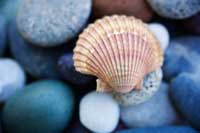
iStockphoto
How, a sceptic might ask, could a blind person ever hope to be a scientist? After all, science is difficult even for many sighted people. How would I carry out experiments or read the huge scientific literature? Perhaps a blind person could be a theoretical physicist, but surely not a biologist. Why would the blind willingly choose biology, that most visual of all the sciences?
The answer is very simple: biology fascinates me. Someone is actually paying me to study shells – some of the most beautiful works of architecture in all of nature. What is more, I get to travel to exotic places, read the scientific literature in all its fantastic diversity, see my own papers and books published, and teach others about science, that most powerful of all ways of knowing. What more could one ask of a profession?
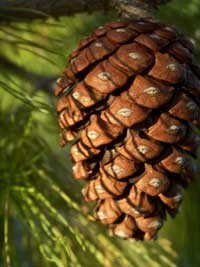
image source: Flickr
Like many of my colleagues, I came to science early in life. Even as a small boy growing up in the Netherlands, I picked up shells, pine cones and pretty stones. My parents, both of whom are avid natural historians, encouraged me; the fact that I was totally blind made no difference at all. At the age of ten, shortly after moving to the USA, I became seriously interested in shells and started my own collection. My parents and brother were enthusiastic; they read aloud, transcribed or dictated every book on natural history they could find.
The reactions of my teachers at school ranged from polite acceptance to genuine enthusiasm when I told them of my intentions to become a biologist. If they thought blindness and biology were incompatible, they kept it to themselves.
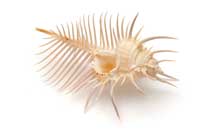
Vermeij wondered whether
some molluscs had evolved
elaborate shells such as this
to ward off predators
Image courtesy of busypix /
iStockphoto
I moved on to study biology and geology at Princeton University, where I received strong support from nearly all of my professors, and then applied to do doctoral work at Yale University. The interviewer was apprehensive; he took me down to the university’s shell collection and asked me if I knew two of the specimens. Fortunately, the shells were familiar to me and his misgivings evaporated. After my PhD at Yale, I moved to the University of Maryland at College Park, becoming a professor there in 1980. In 1988, I moved to the University of California, Davis, as a professor of geology. Along the way, I married a fellow biologist and we had a daughter, Hermine, who is now 29.
What do I actually do in my job that seemed so improbable to the sceptics? Again the answer is simple. I do what my sighted colleagues do: research, teaching and administration.
My research centres on how animals and plants have evolved to cope with their biological enemies – predators, competitors and parasites – over the course of the last six hundred million years of Earth’s history. When I was still a PhD student, I noticed that many of the shells I found were broken, despite their considerable thickness and strength. It soon became clear that shell-breaking predators, especially crabs and fishes, were responsible for this damage. I began to suspect that many of the elegant features of tropical shells – their knobby and spiny surfaces, their tight coiling, and the narrow shell opening often partially occluded by knob-like thickenings – could be adaptations to protect the snails inside from their predators.
How do I do my research? I combine field, laboratory, museum and library work, visiting coral reefs, mangrove swamps, deserts, rain forests, research vessels, marine biological stations, secret military installations, great libraries and big-city museums all over the world. I collect specimens in the field, work with living animals in laboratory aquaria, measure shells in museums and in my own very large research collection, and read voraciously.
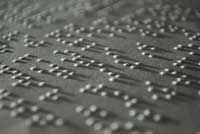
image source: Flickr
Wherever I go I am in the company of a sighted assistant or colleague. There is nothing unusual about this; every scientist I know has assistants. At the library, as my reader reads to me, I transcribe extensive notes on the Perkins Brailler. My Braille scientific library now comprises more than 17 000 publications compiled in more than 300 thick Braille volumes.
Like many of my colleagues, I spend a great deal of time writing. First, I prepare drafts on the Perkins Brailler, then type the manuscript on an ink typewriter. An assistant proofreads and corrects the manuscript, which is then submitted to a journal. So far, I have published 205 peer-reviewed papers and books in this way.
Teaching has always been inextricably intertwined with research for me. Over the years I have taught a great variety of courses – animal diversity, evolutionary biology, ecology, marine ecology, malacology, the mathematics and physics of organic form, and a seminar on extinction. In the large introductory courses, teaching assistants take charge of the laboratory sections and help in grading papers. Again, there is nothing unusual in this: science professors at most universities depend heavily on teaching assistants (as a PhD student, I myself was lucky enough to receive full funding, which meant I did not need to be a teaching assistant).
Like other research-oriented professors, I also train graduate students. Thus far, 15 students have received their PhDs under my direction.
Of course, science isn’t all fun and games: it is competitive and hard work, full of tedious calculations, disappointment when a cherished paper is rejected, or quibbling about grades with a frustratingly inept student. Nobody in science is exempt from this, but in the end the work is immensely rewarding.
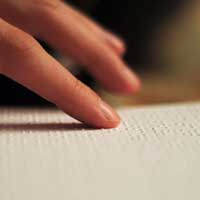
image source: Flickr
In short, there is nothing about my job that makes it unsuitable for a blind person. Of course, there are inherent risks in the fieldwork; I have been stung by rays, struck down by stomach cramps and detained by police who mistook me for an operative trying to overthrow the government of their African country. All field scientists have similar experiences. The blind, no more than the sighted, must act sensibly and with appropriate caution. Along with independence comes the responsibility of assuming risks.
What would I say to a blind person who is contemplating a career in science? Very simple. I would tell that person exactly what I would tell a sighted one: love your subject, be prepared to work hard, don’t be discouraged, be willing to take risks, get as much basic science and mathematics education as you can take, and perhaps above all, display a reasoned self-confidence without carrying a chip on your shoulder. You will need stamina, good grades, the support of influential scientists, and a willingness and ability to discover new facts and new ideas. It is not enough to do well in courses; you must make new observations, design and test hypotheses, and interpret and present the results in such a way that the work is both believable and interesting to others. Science is not for everyone, but I can think of no field that is more satisfying.
Acknowledgement
This article is reproduced with the permission of the NFB; a longer version of the article was published on the NFB website: http://nfb.org/legacy/books/kernel1/kern0610.htm
References
- Leigh V (2010) Sowing the seeds of science: Helke Hillebrand. Science in School 15. www.scienceinschool.org/2010/issue15/helke
Resources
- Not all blind children attend a mainstream school like Geerat Vermeij did; there are also schools especially for blind and partially sighted students. To learn more about one such school, and how science is taught there, see:
- Rau M (2010) Blind date in the science classroom. Science in School 17. www.scienceinschool.org/2010/issue17/wernerliese
- To learn more about Geerat Vermeij’s research, see his latest book:
- Vermeij GJ (2011) The Evolutionary World: How Adaptation Explains Everything from Seashells to Civilization. New York, NY, USA: Thomas Dunne Books. ISBN: 9780312591083
Review
This article could be used to introduce any scientific subject, whether biology, geology, general sciences or something else. It could be used to discuss what working in science actually involves. Being a (blind or sighted) scientist involves so much exciting collaborative work: fieldwork, conferences in many different countries, writing articles, reviewing the work of other scientists, supervising PhD students and, of course, teaching. This article is perfect for a classroom discussion to ‘unmake’ the myth that working in science means being closed up all day alone in a laboratory.
This discussion could also be used to emphasise that scientists are normal people (whether blind or not) who build their careers on hard work and continuous study (see also the review of Leigh, 2010).
Questions relating to the article that could be asked in the classroom include:
- The author refers to biology as “that most visual of all the sciences”. Do you agree with this statement?
- Do you agree that science is that most powerful of all ways of knowing?
- After reading the article, describe in your own words what ‘being a scientist’ means.
Alternatively, the question could be asked to the students before reading the article. After the students have read the article, compare and discuss if / how their views of being a scientist have changed. - Geerat Vermeij is a successful (blind) biologist. After reading the article, what more would you like to know about him and his work? Write three or four questions and briefly justify each question.
Betina da Silva Lopes, Portugal





